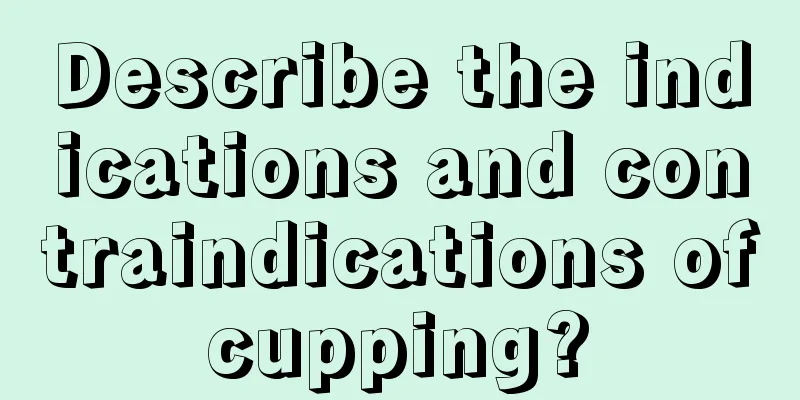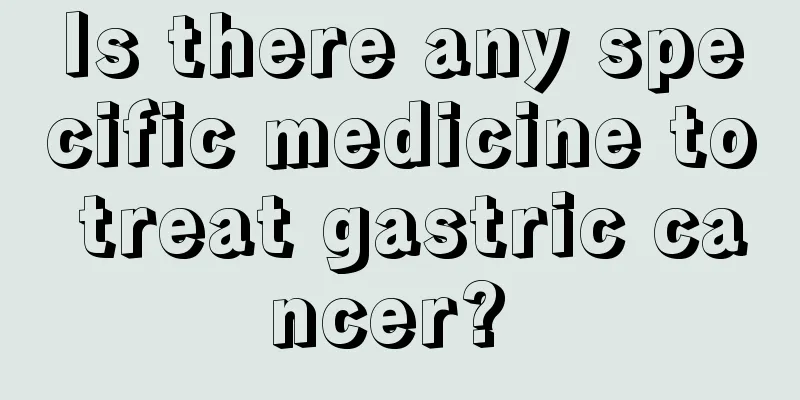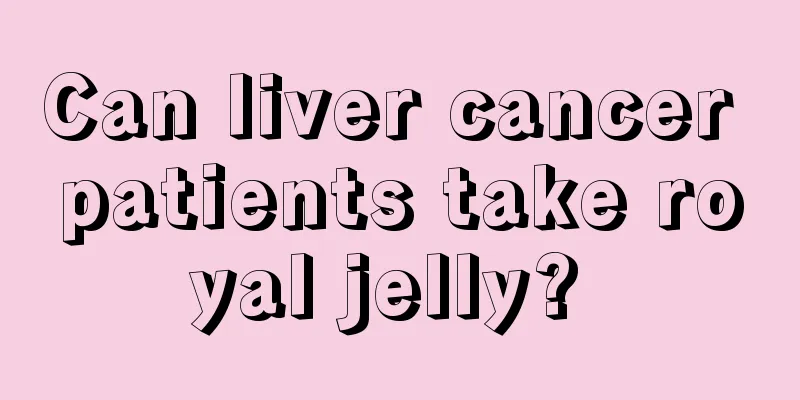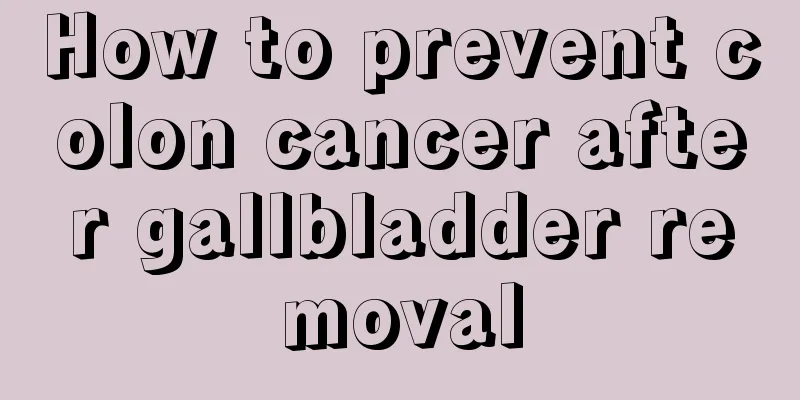Describe the indications and contraindications of cupping?

|
Cupping is a relatively traditional Chinese medicine treatment. In recent years, with the improvement of people's health awareness, many people pay more and more attention to health preservation. Cupping is a common health care method. Cupping can not only help the human body to dredge the meridians, but also promote blood circulation. It has a good effect on obesity and pain. Although cupping has many benefits, it is not suitable for everyone. The following introduces the indications and contraindications of cupping. Describe the indications and contraindications of cupping? 1. Indications Cupping therapy has its unique features in treating sores, ulcers and carbuncles. (1) The negative pressure created by cupping acts on the abscess cavity, which can fully drain the pus, reduce systemic toxic reactions, and promote wound healing. (2) Avoid large incision drainage when treating deep abscesses and complex multi-cavity abscesses, reduce patient pain, and shorten the healing time of drainage wounds. (3) It promotes the shedding of pus clots, shortens the inflammatory cycle, and reduces the use of antibiotics, thereby greatly shortening the course of the disease. (4) The warming effect and long-lasting and uniform negative pressure effect of cupping improve the blood circulation of local wounds and promote the rapid healing of complex wounds and chronic ulcers that have not healed for a long time. Cupping therapy has a wide range of applications. In clinical practice, it has developed from early sores to the treatment of more than 100 diseases including internal medicine, surgery, gynecology, pediatrics, dermatology, ENT, etc. Especially in recent years, some diseases that have never been treated with this method, such as Behcet's disease, postoperative abdominal distension, and some difficult and acute diseases such as senile chronic bronchitis, pulmonary edema, and even heart disease, fractures, etc., have achieved unexpected results using this method. According to clinical observations, this method also has obvious therapeutic effects on hypertension and angina pectoris. Due to the unique medical mechanism of cupping therapy, it is particularly good at treating painful diseases. Cupping therapy has a significant effect in relieving pain. Whether it is internal medicine headaches, abdominal pain, biliary colic, rheumatic pain, or surgical acute lumbar sprains and chronic soft tissue injuries, cupping therapy can achieve immediate results. Some can even be cured with just one treatment. The analgesic effect of blood pricking and cupping is particularly significant. Traditional Chinese medicine believes that "if the meridians are unobstructed, there will be no pain, and if there is pain, the meridians are blocked." Pain is mostly caused by meridian blockage and stagnation of Qi and blood. Blood-letting and cupping can effectively remove blood stasis, promote blood circulation, dredge meridians and activate collaterals, and are often used clinically to treat various pains. Modern medicine also believes that blood acupuncture and cupping stimulate local nerves, regulate the function of blood vessels and muscles in the corresponding area, reflexively relieve spasms of blood vessels and smooth muscles, and produce obvious analgesic effects. In addition, the diseases and symptoms that are ideal for treatment with this method include: colds, mumps, asthma, bronchitis, whooping cough, coronary heart disease, arrhythmia, heatstroke, pulmonary edema, acute gastroenteritis, stomachache, pediatric indigestion, hypertension, sequelae of stroke, diabetes, headache, flank pain, neuralgia, muscle pain, joint pain, back pain, dysmenorrhea, irregular menstruation, mastitis, postoperative intestinal adhesions, urticaria, herpes zoster, postpartum milk deficiency, toothache, tonsillitis, facial paralysis, snake bites, initial stage of sores, myopia, etc. 2. Contraindications If any of the following conditions exist, cupping therapy should be prohibited or used with caution. (1) Cupping therapy is not suitable for patients with poor coagulation mechanism, spontaneous bleeding tendency or continuous bleeding after injury, such as hemophilia, purpura, leukemia, etc. (2) People with severe skin allergies or infectious diseases such as scabies should not use cupping. (3) Patients with malignant skin tumors or those with local skin damage and ulceration, traumatic fractures, varicose veins, large blood vessels on the surface of the body, or those with loss of skin elasticity should not use cupping. (4) Cupping is not suitable for pregnant women’s abdomen, lumbar region, and breasts. When cupping other parts of the body, the technique should also be gentle. (5) During the active period of pulmonary tuberculosis, women should not use cupping during menstruation. (6) Cupping is not suitable for patients with severe heart disease, heart failure, respiratory failure and severe edema. (7) Cupping is not recommended on the facial features or the front and back genital areas. (8) Cupping is not suitable for people who are severely neurotic, have convulsions, are manic, or are uncooperative. (9) Cupping should be used with caution if you are drunk, too hungry, too full, too thirsty, or overworked. Cupping is very popular nowadays, and many people tend to choose cupping when they feel unwell. Although cupping is effective, we also need to understand what we need to know about cupping. I hope the above introduction will be helpful to everyone. |
<<: What bacteria are there in life and how to kill them
Recommend
What are the causes of lung cancer? 3 causes of lung cancer you must know
Lung cancer is the most common type of cancer, an...
What are the effects of vinegar and rock sugar
Vinegar and rock sugar are especially suitable fo...
How to remove rust stains?
Now that people's material life has improved,...
Camphor oil effects and functions
The smell of camphor trees is very strong. In man...
What are the early symptoms of prostate cancer
Prostate cancer is a disease that occurs among th...
Can wearing underwear generally make your breasts bigger?
Nowadays, many people will still get plastic surg...
What is the cause of liver metastasis of cholangiocarcinoma and what to do
Biliary duct cancer liver metastasis is often cau...
How to use sunscreen to achieve good sun protection effect
As we all know, the ultraviolet rays in the sun c...
How does traditional Chinese medicine treat lung cancer? Introduction to 4 methods of treating lung cancer with traditional Chinese medicine
When it comes to treating lung cancer, medicine i...
Is it okay to brush your teeth with hot water?
When brushing teeth, people will definitely use w...
What to do if the milk in the breast is weaning
Many women choose to breastfeed their babies beca...
How long can a patient with mid-term nasopharyngeal cancer live?
The life expectancy of patients with mid-stage na...
What is the reason why I always feel sleepy
Sleeping is very important to the human body. It ...
What causes nasopharyngeal cancer and how can it be prevented?
How is nasopharyngeal cancer caused? How can it b...
How do hospitals treat liver cancer? Hospitals commonly use three treatment methods for liver cancer
Liver cancer is a tumor disease that is difficult...









